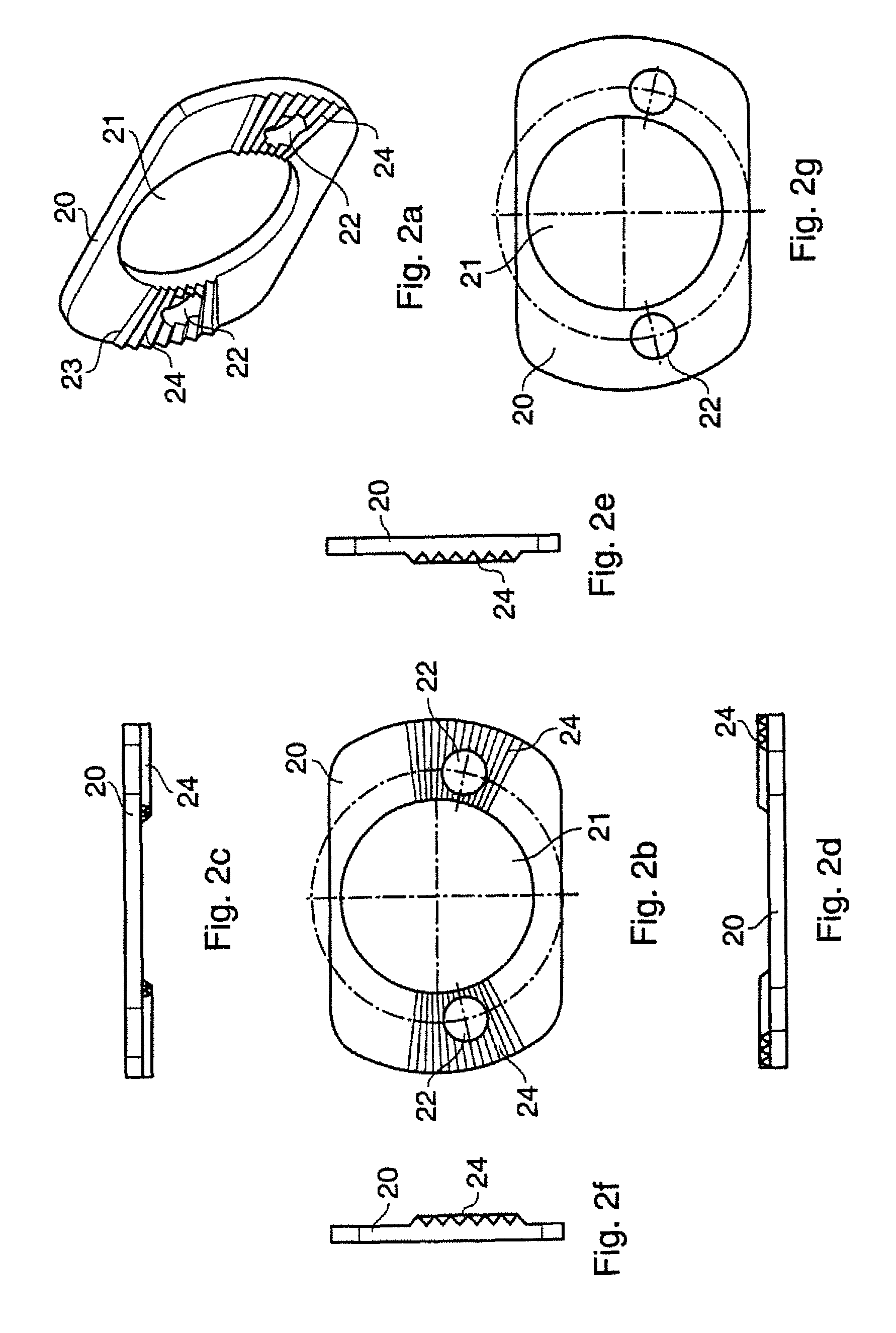Locking device
a technology of locking pins and locking pins, which is applied in the direction of screwdrivers, threaded fasteners, manufacturing tools, etc., can solve the problems of inability to withstand a limited torque of locking pins, inconvenient unfastening or rotation of one component, and inability to adjust the position of the locking pin, so as to improve the grip and reduce the cost of machining and production.
- Summary
- Abstract
- Description
- Claims
- Application Information
AI Technical Summary
Benefits of technology
Problems solved by technology
Method used
Image
Examples
Embodiment Construction
[0027]FIG. 1a shows a perspective view of a locking plate 10. The locking plate 10 has a component engaging portion, in this example a receiving hole 11 to be fitted, in use over a head of a first component (not shown in this FIG.). The receiving hole 11 has a plurality of equiangularly spaced internal corners 12 to engage with the head of the first component. A surface 13 of the locking plate 10 has grooves 14 to engage with a grooved surface carried by another component or to which the first component is connected. Two fixing holes, in this example curved fixing slots 15, are provided for fixing members to be passed through to force the grooves 14 of the locking plate 10 into engagement with a grooved surface carried by another component.
[0028]FIG. 1b shows a top view of the locking plate 10. In this example the shape of the receiving hole 11 is defined by two corresponding regular hexagons superimposed upon one another, with one hexagon being rotated relative to the other by 30°....
PUM
| Property | Measurement | Unit |
|---|---|---|
| angles | aaaaa | aaaaa |
| angles | aaaaa | aaaaa |
| center of curvature | aaaaa | aaaaa |
Abstract
Description
Claims
Application Information
 Login to View More
Login to View More - R&D
- Intellectual Property
- Life Sciences
- Materials
- Tech Scout
- Unparalleled Data Quality
- Higher Quality Content
- 60% Fewer Hallucinations
Browse by: Latest US Patents, China's latest patents, Technical Efficacy Thesaurus, Application Domain, Technology Topic, Popular Technical Reports.
© 2025 PatSnap. All rights reserved.Legal|Privacy policy|Modern Slavery Act Transparency Statement|Sitemap|About US| Contact US: help@patsnap.com



